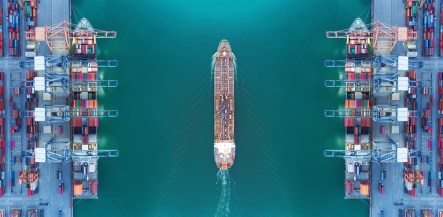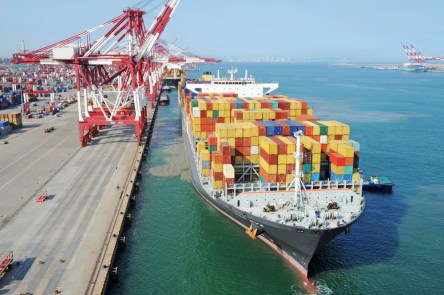Editor’s note: The following interview was originally published in Pacific Ports Magazine’s August edition. It is reprinted here with permission. With over 30 years of property management and software implementation experience, Jay Rainaldi is the professional services director for government business at Yardi. and oversees the implementation, support and client acquisition in the government space. He has served on many boards and committees in the residential, military, single-family and government arenas during his career and has been a speaker and moderator at numerous industry conferences and events. Over the past decade — not to mention the past few pandemic challenged months — efficient port management has increasingly become an art in and of itself. Whether it be for management of property, facilities or construction projects, tenant services, accounting and payment processing, budgeting and forecasting or even to gain energy efficiencies, the many tasks related to port management have multiplied as the maritime world moves toward digitization, industry growth, environmental sustainability and increasing government regulations. The APP recently discussed the topic of port management with Jay Rainaldi, director of government solutions at Yardi, to gain insights into the many factors affecting efficient operations and how solutions, such as the Yardi Ports Suite, can provide much needed assistance. Jay, first, thanks for helping the Association investigate ways to assist Port Members on best practices. Could we start by identifying the trends you’ve seen in port management over the past 10 or 20 years, including how technological advances have impacted on port staff and how has port management changed? JR: Increasing globalization, world trade and financial constraints have created changes in port management in the last several years. Ports have been forced to modify their infrastructure to allow for larger ships and containers. Additionally, ports are doing...
Ports of Tomorrow
Renovations & Automation
More than 95 percent of trade worldwide is moved via water. Though the share of maritime trade has not decreased in recent years, its sluggish growth has shipping lines competing for network efficiency. Current growth lingers between 2-3 percent, compared with 10-12 percent before 2008. Kim Fejfer, CEO of APM Terminals, explains, “The need for change has been more pronounced in the past two years than in the past 20 years,” he says. “Changes in shipping require not only investment and increased efficiency at the individual port level, but the configuration of port complexes needs to adapt to cope with current trade flows, increased ship sizes and demands for lowest possible costs. There will be clear winners and losers in the coming years.” To emerge as victors, best practices suggest packing more products onto fewer, larger ships. This method decreases transportation and personnel costs on one end. On the other, ports must now undergo costly renovations and technological upgrades to accommodate the larger vessels and greater loads: Updates to Ports In the Port of Oakland, Ben E. Nutter Terminal recently reconfigured entrance gates, added more than 100 units of equipment to expedite cargo handling, and upgrading the terminal operating system. Upon reopening this spring, the terminal receives empty containers and export cargo with the inbound call of the 1,100 TEU vessel, Ever Liberal. At Port of Baltimore, Ports America Chesapeake and CSX Intermodal signed an agreement that gives the former company operational responsibility for the intermodal container service. This agreement will promote smoother operations for direct on-dock access to rail service. It will also improve the port’s appeal as one of only three East Coast ports capable of accommodating super-post-Panamax ships. The Port of Houston Authority receives 67 percent of all containerized cargo in...


